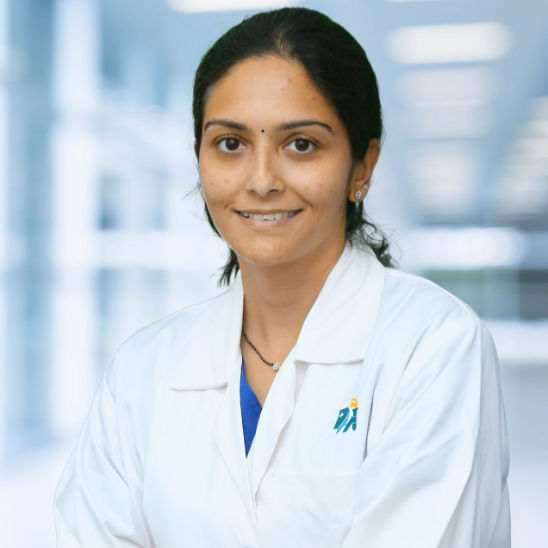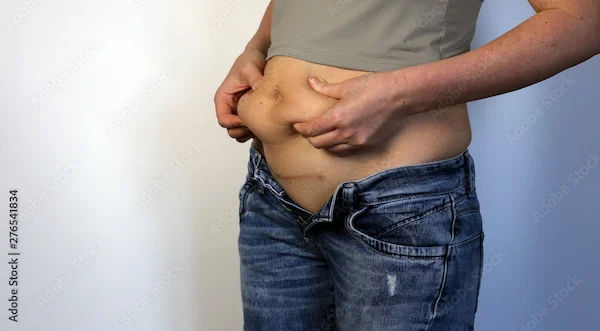How To Reduce Calf Fat?
Learn about calf fat and how to reduce it through diet, exercises, hydration and lifestyle adjustments. Discover how to track progress, medical and surgical interventions, and common myths related to calf fat loss.

Written by
Last updated on 3rd Jul, 2025
Genetics and body fat primarily influence the size and shape of the calves. While it’s not possible to specifically target fat loss in one area, reducing overall body fat percentage can help reduce calf size. To achieve this, it is essential to implement lifestyle modifications that include a balanced diet, regular cardiovascular exercise, and strength training.
These changes will promote a leaner appearance throughout the body and enhance overall fitness. This article covers the causes of calf fat and effective strategies for reducing it through diet, exercises, lifestyle tips and more.
Understanding Calf Fat
The fat that accumulates around the calf muscle of the body is called calf fat:
It can occur due to several reasons, such as genetics, and a person's body fat percentage.
The key contributors to one's excessive fat storage are poor diet and a sedentary lifestyle.
This subcutaneous fat (stored under the skin) may also increase due to low muscle mass.
Diet and Nutrition for Reducing Calf Fat
To reduce calf fat, the following nutritional strategies can be helpful:
Incorporating high-fibre foods.
Opting for low-carb diets can be effective for fat loss.
Opting for the nutritious choices of fruits and vegetables, which are inherently low in calories, can prove to be helpful.
Eating a variety of fruits, vegetables, whole grains, and plant proteins has been advised under the National Institutes of Health (NIH) guidelines.
Additionally, it is advised to limit:
Refined carbohydrates
Sugary foods and drinks
Excess salt
Red meat
Effective Exercises for Calf Fat Reduction
Here are a few effective exercises known to reduce calf fat reduction:
Cardiovascular Exercises
High-intensity interval training (HIIT) burns calories and tones muscles. Quick lower-body workouts strengthen the calves while shedding fat.
Strength Training for Legs
The calf consists of three muscles that merge into the Achilles tendon. In order to lose fat, the focus must be on muscle development. Exercises such as calf and heel raises can assist in strengthening the calf muscles. For a greater challenge, weights can be added.
Stretching and Flexibility Exercises
Any type of stretching and flexibility exercises are known to improve flexibility and prevent bulky calves.
Importance of Hydration for Calf Fat Loss
Water plays a key role in metabolism and fat burning. In this regard:
Maintaining adequate water intake on a daily basis can greatly assist in the reduction of leg fat. It also helps in burning calories and boosting metabolism.
When one's stomach is filled with water, it sends a signal to the brain to stop eating and thus reduces the feeling of hunger.
Drinking cold water is more likely to boost the whole process, as the body uses energy to warm it up for digestive purposes.
Here are some hydration tips to consider for calf fat reduction:
Drinking water upon waking and with meals, along with setting reminders, helps maintain hydration throughout the day.
Decaf tea offers hydration, flavour, and relaxation benefits.
Low-fat or plant-based milk provides hydration, along with calcium and vitamin D.
Salads can be added to meals to provide the body with extra hydration.
Lifestyle Adjustments to Support Calf Fat Loss
Consider adopting the following lifestyle changes to aid calf fat loss:
Build a daily exercise routine. Add strength training to build muscle and aerobic exercises to boost heart rate and breathing.
Getting 7-9 hours of sound sleep each night is important for regulating hormones and controlling cravings.
Chronic stress increases cortisol, which can lead to fat storage, especially in the lower body. Here are some effective stress management tips:
Mindfulness Meditation: Reduces stress and helps prevent stress eating.
Deep Breathing: Breathing exercises like diaphragmatic breathing help calm the body.
Regular Exercise: Walking, yoga, and strength training help reduce stress and support leg fat loss.
Monitoring and Tracking Progress for Reducing Calf Fat
Tracking progress is important for staying motivated. In this regard, several methods can be used to track body composition:
Skinfold Thickness Measurements: This method uses callipers to measure the thickness of a fold of skin at different places of the body, estimating body fat percentage.
Bioelectrical Impedance Analysis (BIA): Healthcare providers use a small electrical current to estimate body fat percentage by measuring how tissues resist the flow of current.
Dual-Energy X-ray Absorptiometry (DXA): This method uses low-dose X-rays to measure bone density and body composition. It is one of the most accurate methods available.
Near Infrared Interactance: This technique employs near-infrared light to measure the thickness of fat under the skin and estimate body fat percentage.
Furthermore, it is crucial to set realistic goals that help in achieving leg fat loss in a healthy and sustainable way. Here are some strategies to consider:
Setting goals improves the chances of success by increasing accountability.
Meeting small goals helps facilitate progression to larger ones.
Setting realistic timelines allows time to be managed wisely while staying focused on core objectives.
Reviewing set goals periodically allows modification, ensuring an individual's actions always align with the set goals.
Medical and Professional Interventions for Calf Fat Loss
Medical intervention is often necessary when a proper diet and exercise regimen does not provide effective change. It is advised to speak to qualified medical practitioners to consider what best fits their health condition and personal objectives.
Surgical options for body fat reduction include:
Lifts and tucks: These surgeries remove excess fat and skin.
Liposuction: Such procedures, known as lipo, remove fat deposits through suction.
Non-invasive options available are:
Laser therapy
Cryolipolysis (fat freezing)
Consult Top Plastic Surgeon
Common Myths About Calf Fat Loss
Many myths exist regarding calf fat loss. Here are a few of them, along with scientific evidence disproving them:
Myth: Cardio is the most effective way to lose weight.
Fact: Strength training increases calorie burn even after exercise, making it more effective than cardio alone.
Myth: Fat loss can be targeted in specific areas.
Fact: Fat reduction occurs evenly throughout the body. Strength training combined with proper nutrition ensures sustainable resu
Myth: Weightlifting is unsafe for older individuals.
Fact: Strength training improves bone density, stabilises joints, and reduces the risk of injury, particularly in women.
Myth: Muscle turns into fat if strength training stops.
Fact: Muscle mass decreases without exercise, while weight gain results from excess calorie intake.
Myth: Strength training is not suitable for beginners.
Fact: Resistance training benefits individuals at all fitness levels. Bodyweight exercises and light weights help build strength safely.
Success Stories and Motivational Tips
Conclusion
To sum it up, muscle building accompanied by a cardio workout helps to lose weight and tone down calves. Eating more whole-grain cereals, proteins, and vegetables is necessary to inhibit fat accumulation. Cutting down on processed items, sugary snacks, and salty foods yields better outcomes. Also drinking enough water helps speed up metabolism, digestion, and appetite control.
For excessive fat, treatments like laser therapy and liposuction can be considered with expert guidance. Long-term success requires consistency, setting small achievable goals, and a daily workout routine. Also, a balanced diet, optimum hydration, and proper rest ensure lasting results.
Consult Top Plastic Surgeon

Dr. Anup Dhir
Plastic Surgeon
38 Years • MBBS, MS, MCh (Plastic & Reconstructive Surg.), FECSM
Delhi
Apollo Hospitals Indraprastha, Delhi

Dr. Pratyusha Priyadarshini Mishra
Plastic Surgeon
7 Years • MBBS, MS (GENERAL SURGERY), MCh (Plastic and Reconstructive Surgery), DrNB (Plastic and Reconstructive Surgery)
Ahmedabad
Apollo Hospitals - Gandhinagar, Ahmedabad, Ahmedabad

Dr. N. U. Annapurna
Plastic Surgeon
13 Years • MBBS, MS General Surgery, MCh Plastic Surgery
Bangalore
Samista Cosmetic Plastic and Laser Surgery Centre, Bangalore

Dr. Reginold Lam
Plastic Surgeon
25 Years • MBBS, Mch
Hyderabad
Sathya Veda Medical Center, Hyderabad

Dr. Suma Pigilam
Plastic Surgeon
12 Years • M.S.,M.Ch(Plastic Surgery)
Hyderabad
Apollo Hospitals Jubilee Hills, Hyderabad

